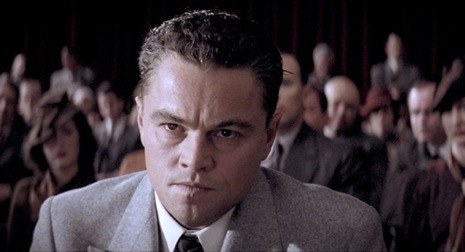This is most definitely a film, a wonderful, essential conjuring of something from nothing, a necessity for the film-maker, and the selfless defiance of a repressive regime. The Iranian government has banned director Jafar Panahi from film-making or from leaving the country for twenty years, and at the time of this film’s making, he was appealing a six-year prison sentence; it was smuggled to Cannes on a flashdrive hidden in a cake. For what can a film-maker do if not make a film?
Panahi invites his friend Mojtaba Mirtahmasb over to kick some ideas around and they start off with Panahi taping out a Dogville-like set on his living room carpet to illustrate the script of the film he was about to make before the ban. For the most part, he is not letting his situation get him down, chipper and positive, chuckling over the official lies that he is presiding over the Berlin Festival jury, and always ready to see what ideas they can come up with. But he throws up his hands in a moment of bitterness, saying “if you could tell a film, why make it?”  He is quite ready to interrupt the path they are on if it strikes him as false, his guiding light being to film the truth (ostensibly). And so he relates the episode of “taking off the cast”, when a child actor in one of his previous films – Mirror – threw off her prop cast and proclaimed that she knew perfectly well how to get home on the bus, unlike the character she was playing.
He is quite ready to interrupt the path they are on if it strikes him as false, his guiding light being to film the truth (ostensibly). And so he relates the episode of “taking off the cast”, when a child actor in one of his previous films – Mirror – threw off her prop cast and proclaimed that she knew perfectly well how to get home on the bus, unlike the character she was playing.
This feeds into a later clip Panahi plays on his TV, of another of his films, Crimson Gold to which he explains that amateur actors, or even the location, can take over the direction of a film: if one turns the camera on the right people or things, the film can make itself. This is a familiar, fertile strand of Iranian film-making, but Panahi is more sly than just to cut together a day’s fooling around with a DV cam – he suggests to Mirtahmasb that he tell his wife they’re “just two idle men filming one another”, like hairdressers grooming one another when they’re bored. The disingenuousness is charming: the film was shot over four days rather than the one it appears, but Panahi uses that deceit to validate his repeated variations on “let’s see what we can come up with”. No matter if it’s on a cheap prosumer camera or even an iphone, the film-maker must film, and indeed has a duty to do so. As Mirtahmasb points out, if Panahi had turned the iphone on coming out of his trial, the footage would be tremendous. If one doesn’t film, one doesn’t have a film, but a film is not just the camera left running, even if it sometimes looks as though it is.
The slyness extends also to the world outside – virtually the first sound we hear is a gunshot, as Panahi spreads his morning jam on toast, and the noises recur throughout the day. Only towards the end do we learn that this is “Fireworks Wednesday” and that we cannot be sure if the increased cacophony of bangs and whizzes is gunfire or fireworks. Nor can we be sure how staged his final descent in the elevator is, filming the fill-in trashman who never gets to finish his story of being present the night the police came for Panahi.  It ends with the camera peering outside, at some kind of conflagration beyond the building’s gates, before the younger man warns Panahi to get back inside lest someone see him with a camera in his hands. But by this time, of course, it is – defiantly – too late.
It ends with the camera peering outside, at some kind of conflagration beyond the building’s gates, before the younger man warns Panahi to get back inside lest someone see him with a camera in his hands. But by this time, of course, it is – defiantly – too late.
So from the apparent banality of simply two idle men with cameras, Panahi has created not only a personal work, encompassing some of his reflections on film-making and revealing something of his film-making thought-processes and principles; but also, both deliberately but unavoidably, a political one. For all that Mirtahmasb amusingly refuses to cut when Panahi tells him so (“you’re not the director”!), and the end credit “an effort by”, he has directly contravened the government’s ruling in the greyest way possible, illuminating both the artist’s need to express himself, and the possibilities for expressing oneself under the most limited of circumstances. Bold, brave and deceptively featherlight, it is a glorious exploration and a jubilant affirmation of the possibilities of art under oppression. Also, he has a really cool iguana.
![]()
